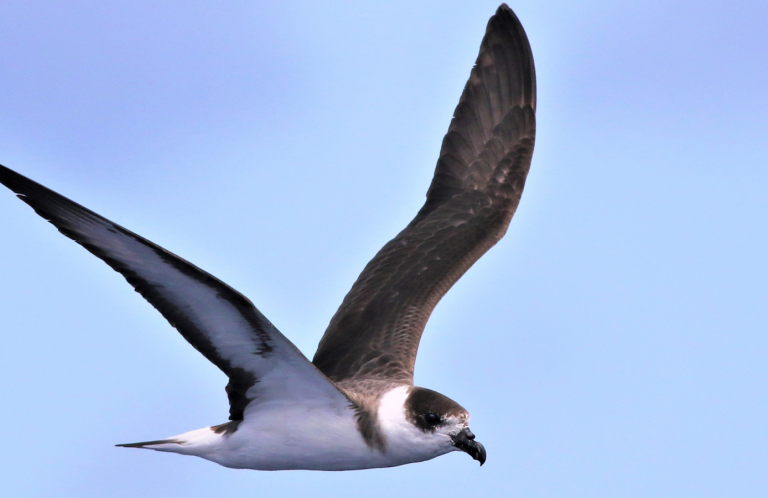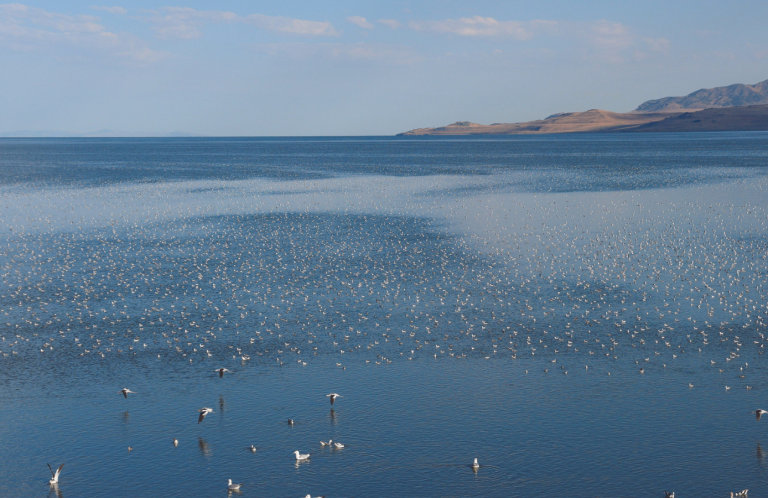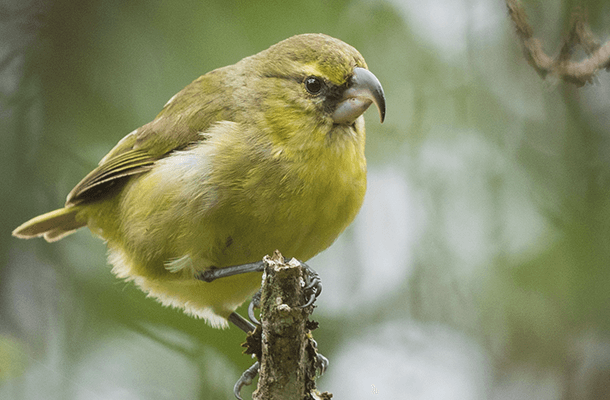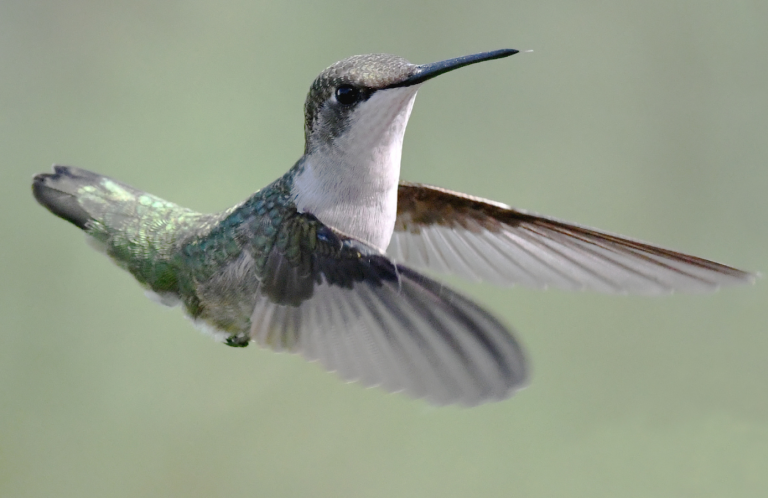Twelve Tips to Help Migratory Birds on Their Way
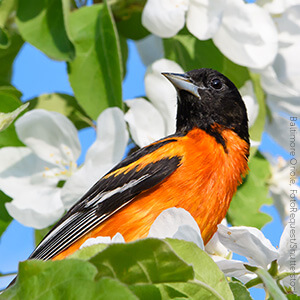 Spring migration, one of nature's greatest annual journeys, is underway as billions of migratory birds leave their wintering grounds and head north toward seasonal food sources and favorite nesting spots.
Spring migration, one of nature's greatest annual journeys, is underway as billions of migratory birds leave their wintering grounds and head north toward seasonal food sources and favorite nesting spots.
But this high-endurance pilgrimage isn't without danger. Outdoor cats, poorly placed communications towers, unforgiving and — to birds — invisible glass surfaces, and pesticide-laced plants all await. Add to that an ongoing crisis of habitat loss and it's no mystery why so many birds fail to reach their destinations during spring migration.
The good news is that all of us can take steps to make migration a little safer. Even better, many of these activities are simple, free, and require only a few minutes. To get started, have a look at our staff's top 12 suggestions — and find the solutions that work for you.
12. Turn Off the Lights
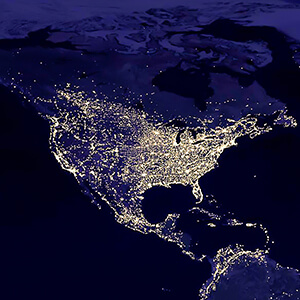 "Up to 1 billion birds die each year in the United States from colliding with buildings or structures. As migratory birds travel through cities with large buildings and bright lights, they can become disoriented by the lights, causing them to collide.
"Up to 1 billion birds die each year in the United States from colliding with buildings or structures. As migratory birds travel through cities with large buildings and bright lights, they can become disoriented by the lights, causing them to collide.
You can help birds during critical migration periods by turning off all non-essential lights from 11 p.m. to sunrise. Learn more about how you can help by visiting BirdCast's Lights Out webpage. You can also find out if a large number of migratory birds is passing through your area by checking BirdCast's online alerts." 
Bryan Lenz, Bird Collisions Campaign Manager and Bird City Americas Director
11. Paint a Window Warning
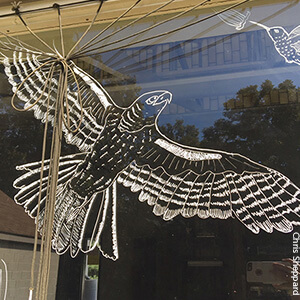 "Hundreds of millions of birds in the U.S. die from hitting glass every year – almost half of those on home windows. Luckily, there are many ways to make your windows safe for birds. One of my favorite methods is applying tempera paint to the outside surface of glass. Tempera is nontoxic, cheap, easy to use (and remove) and amazingly long lasting — even in rain. If you're short on time, using a sponge is a good way to make a quick pattern. With a little more effort, you can create spring-themed designs or even small works of art depicting your favorite birds; either will help prevent collisions. Remember: Whatever kind of design you use, make sure your lines are no more than two inches apart to help smaller birds avoid collisions."
"Hundreds of millions of birds in the U.S. die from hitting glass every year – almost half of those on home windows. Luckily, there are many ways to make your windows safe for birds. One of my favorite methods is applying tempera paint to the outside surface of glass. Tempera is nontoxic, cheap, easy to use (and remove) and amazingly long lasting — even in rain. If you're short on time, using a sponge is a good way to make a quick pattern. With a little more effort, you can create spring-themed designs or even small works of art depicting your favorite birds; either will help prevent collisions. Remember: Whatever kind of design you use, make sure your lines are no more than two inches apart to help smaller birds avoid collisions." 
Chris Sheppard – Bird Collisions Campaign Director
10. Support the Laws That Migratory Birds Can't Live Without
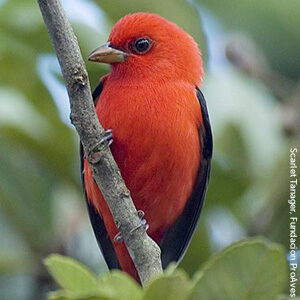 "The Migratory Bird Treaty Act (MBTA) is one of the most important pieces of legislation affecting birds in the U.S. Unfortunately, the previous administration made the MBTA harder to enforce by claiming that the law does not address unintentional harm to birds caused by industrial activities. This move is expected to be reversed by the Biden Administration, but we need to ensure that MBTA protections are in place permanently. Please ask your Representative and Senators to be co-sponsors of the Migratory Bird Protection Act, a bill that would strengthen the MBTA and go even further to protect migratory birds."
"The Migratory Bird Treaty Act (MBTA) is one of the most important pieces of legislation affecting birds in the U.S. Unfortunately, the previous administration made the MBTA harder to enforce by claiming that the law does not address unintentional harm to birds caused by industrial activities. This move is expected to be reversed by the Biden Administration, but we need to ensure that MBTA protections are in place permanently. Please ask your Representative and Senators to be co-sponsors of the Migratory Bird Protection Act, a bill that would strengthen the MBTA and go even further to protect migratory birds."
David Wiedenfeld – Senior Conservation Scientist
9. Protect Birds From Cats
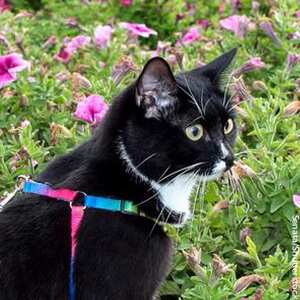 "Cats are lovable pets, but they're also instinctive predators. One cat alone may kill up to 55 birds each year. It all adds up! So keep your cat on a leash or in an enclosure to protect migratory birds (and keep your cat safe, too). Don't have a cat? You can still support bird-friendly practices in your community by encouraging the passage of local ordinances mandating responsible pet ownership. Learn more about other simple actions you can take to protect birds on our Cats Indoors page."
"Cats are lovable pets, but they're also instinctive predators. One cat alone may kill up to 55 birds each year. It all adds up! So keep your cat on a leash or in an enclosure to protect migratory birds (and keep your cat safe, too). Don't have a cat? You can still support bird-friendly practices in your community by encouraging the passage of local ordinances mandating responsible pet ownership. Learn more about other simple actions you can take to protect birds on our Cats Indoors page." 
Grant Sizemore – Director of Invasive Species Programs
8. Make Your Yard a Bird Paradise for Spring Migration
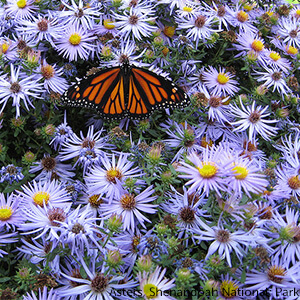 "I've packed my quarter-acre lot in suburban Maryland with dozens of the same native plant species you might see in nearby woods. There's a 'mini meadow' of asters, goldenrods, and native grasses, and a tiny woodland of native viburnums, hollies, and other berry-producing shrubs that birds love. But the most important way I support my local birdlife is by learning to love insects. Even seed-eating birds can't live without insects, since their nestlings need protein-rich caterpillars to thrive. My yard is a 'pesticide-free zone' and I prioritize plants that support the most insect species, using Douglas Tallamy's research on plant-insect interactions as a guide. Some of them, like wild cherries, feed more than 450 species of moths and butterflies in the Mid-Atlantic region."
"I've packed my quarter-acre lot in suburban Maryland with dozens of the same native plant species you might see in nearby woods. There's a 'mini meadow' of asters, goldenrods, and native grasses, and a tiny woodland of native viburnums, hollies, and other berry-producing shrubs that birds love. But the most important way I support my local birdlife is by learning to love insects. Even seed-eating birds can't live without insects, since their nestlings need protein-rich caterpillars to thrive. My yard is a 'pesticide-free zone' and I prioritize plants that support the most insect species, using Douglas Tallamy's research on plant-insect interactions as a guide. Some of them, like wild cherries, feed more than 450 species of moths and butterflies in the Mid-Atlantic region." 
Clare Nielsen – Vice President of Communications
7. Reduce Your Plastic Footprint
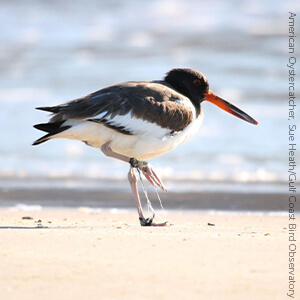
"It's estimated that there are about 330 billion pounds of trash on our coasts and in our oceans, with another 17 billion pounds of plastic entering the marine environment each year. Birds can ingest plastics or become entangled in them, which can cause serious injuries or even death.
No matter how far you live from our coasts, your daily actions can have an impact! Eighty percent of trash in the marine environment comes from land-based sources, as trash easily travels via gutters, rivers, bayous, and other watery pathways to our oceans. Switching from disposable plastic items to reusable alternatives is a great way to reduce trash. Consider using reusable bottles, cups, bags, utensil sets, and more — there are many great ways to reduce your plastic footprint! To learn more, check out ABC's clean coast program, Stopping Plastics and Litter Along Shorelines (SPLASh)."

Kelly Martin – Texas Coastal Outreach Coordinator
6. Buy Bird-Friendly Coffee
 "After oil, coffee is the most traded commodity in the world. To meet demand, coffee is often grown on monoculture plantations across the world, which cover hundreds of thousands of acres and reduce habitat for birds and wildlife. However, there is a better alternative. Shade-grown coffee, cultivated under existing tree canopies, doesn't require deforestation, leaving habitat intact for wildlife. It also tastes great.
"After oil, coffee is the most traded commodity in the world. To meet demand, coffee is often grown on monoculture plantations across the world, which cover hundreds of thousands of acres and reduce habitat for birds and wildlife. However, there is a better alternative. Shade-grown coffee, cultivated under existing tree canopies, doesn't require deforestation, leaving habitat intact for wildlife. It also tastes great.
The Bird Friendly coffee certification developed by the Smithsonian Migratory Bird Center establishes the best coffee farming practices to provide birds with forest-like habitat. Birds are not the only ones to benefit from Bird Friendly coffee; farmers who receive certification from the Migratory Bird Center can also access better prices for their coffee. In early 2021, ABC and its Venezuelan partner, Provita, worked with farmers to help market and sell Venezuela's first-ever Bird Friendly coffee."
Andrés Anchondo – Conservation Specialist
5. Keep Your Woods Wild
 "You can provide habitat for birds during spring migration by letting things around the house get a little messy. I have a wooded backyard, so I try to leave it as natural as possible. I let the understory grow and pull invasive plants such as Japanese Stiltgrass and Garlic Mustard. I leave logs and fallen branches in place to shelter insects and other small critters that birds feed on.
"You can provide habitat for birds during spring migration by letting things around the house get a little messy. I have a wooded backyard, so I try to leave it as natural as possible. I let the understory grow and pull invasive plants such as Japanese Stiltgrass and Garlic Mustard. I leave logs and fallen branches in place to shelter insects and other small critters that birds feed on.
When larger trees break or fall, I leave them be — as long as they're not hanging over the roof. This gives snag-nesting migrants like the Great Crested Flycatcher places to nest — along with year-round residents like the Eastern Screech-Owl and Downy, Hairy, Pileated, and Red-bellied Woodpeckers — and is a nice source of grubs and other bird food." 
Gemma Radko – Communications and Media Manager
4. Give Beach-nesting Birds a Break
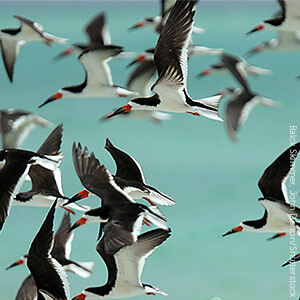 "As temperatures rise, many of us begin heading to the beach. And we're not alone: This is a critical time for several migratory species — I'm thinking of Black Skimmers, Snowy Plovers, and Least Terns — that lay their eggs in the sand and are particularly vulnerable. One of the biggest challenges they face is the threat from unleashed dogs. Our team in the Gulf Coast region has seen loose dogs eat eggs and take chicks. This is a big problem, considering that nearly all of these birds have declining populations. The obvious solution is to leash dogs. As our team likes to say, 'Bird-friendly beaches have dogs on leashes!'"
"As temperatures rise, many of us begin heading to the beach. And we're not alone: This is a critical time for several migratory species — I'm thinking of Black Skimmers, Snowy Plovers, and Least Terns — that lay their eggs in the sand and are particularly vulnerable. One of the biggest challenges they face is the threat from unleashed dogs. Our team in the Gulf Coast region has seen loose dogs eat eggs and take chicks. This is a big problem, considering that nearly all of these birds have declining populations. The obvious solution is to leash dogs. As our team likes to say, 'Bird-friendly beaches have dogs on leashes!'" 
Kacy L. Ray – Gulf Conservation Program Manager
3. Support Groups That Are Making Birding More Inclusive
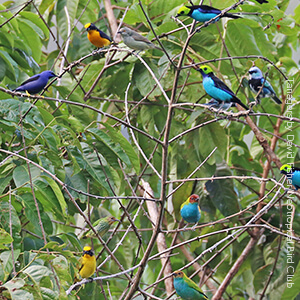
"Everyone should be able to enjoy the wonders of bird migration, and we all have a role in making that possible. Many who engage in birding face issues related to discrimination, safety, and access, including birders of color, women, LGBTQIA+ people, or folks with disabilities.
In addition to events like Black Birders Week and Latino Conservation Week, groups such as Birdability and the Feminist Bird Club are working to address these and other barriers through advocacy, education, and community engagement. By following and supporting this work, we can help the communities these groups serve and the birding community at large. Bringing more people into the fold, with diverse perspectives and experiences, is also a good way to strengthen bird conservation. As Dr. J. Drew Lanham wrote: ‘If the goal is to conserve, then we need all involved that we can muster.'" 
Erica Sánchez Vázquez – Digital Content Manager
2. Fuel a Hungry Hummingbird
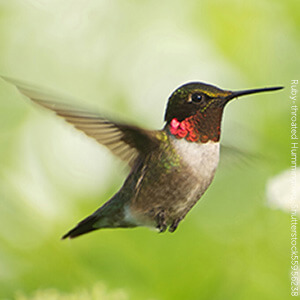 "Put out those hummingbird feeders during spring migration — the hummers are arriving. Be sure to use a mixture of four parts water to one part sugar. And do without the dye: Red dyes serve no purpose. Most hummingbird feeders already have enough color on them to attract hummingbirds, and, even worse, these dyes contain petroleum that may be harmful to hummingbirds. Don't forget to change the mixture and clean feeders often to be sure it's fresh and safe for those super-charged flying jewels."
"Put out those hummingbird feeders during spring migration — the hummers are arriving. Be sure to use a mixture of four parts water to one part sugar. And do without the dye: Red dyes serve no purpose. Most hummingbird feeders already have enough color on them to attract hummingbirds, and, even worse, these dyes contain petroleum that may be harmful to hummingbirds. Don't forget to change the mixture and clean feeders often to be sure it's fresh and safe for those super-charged flying jewels." 
EJ Williams – Vice President, Migratory Birds & Habitats
1. Inspire a Future Bird Conservationist
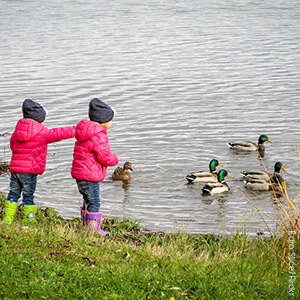 "I have younger nieces and nephews in Wisconsin, and when I visit them during spring migration, I like to make sure they get outside, where I can introduce them to birds: Mr. Blue Jay, Mr. Cardinal, Mrs. Common Yellowthroat. Introducing birds to kids at a young age can instill a desire to explore the natural world. And that's only one benefit. It also helps children bond with wildlife and develop an environmental ethic that will, hopefully, remain with them for the rest of their lives. I'm hoping one of my nieces or nephews will be the John Muir of 2030!”
"I have younger nieces and nephews in Wisconsin, and when I visit them during spring migration, I like to make sure they get outside, where I can introduce them to birds: Mr. Blue Jay, Mr. Cardinal, Mrs. Common Yellowthroat. Introducing birds to kids at a young age can instill a desire to explore the natural world. And that's only one benefit. It also helps children bond with wildlife and develop an environmental ethic that will, hopefully, remain with them for the rest of their lives. I'm hoping one of my nieces or nephews will be the John Muir of 2030!” 
Andrew Rothman – Migratory Bird Program Director





































